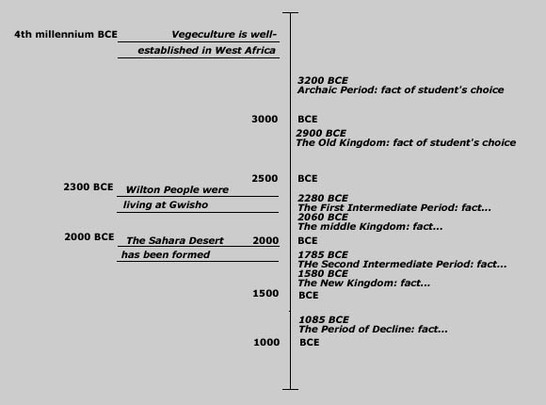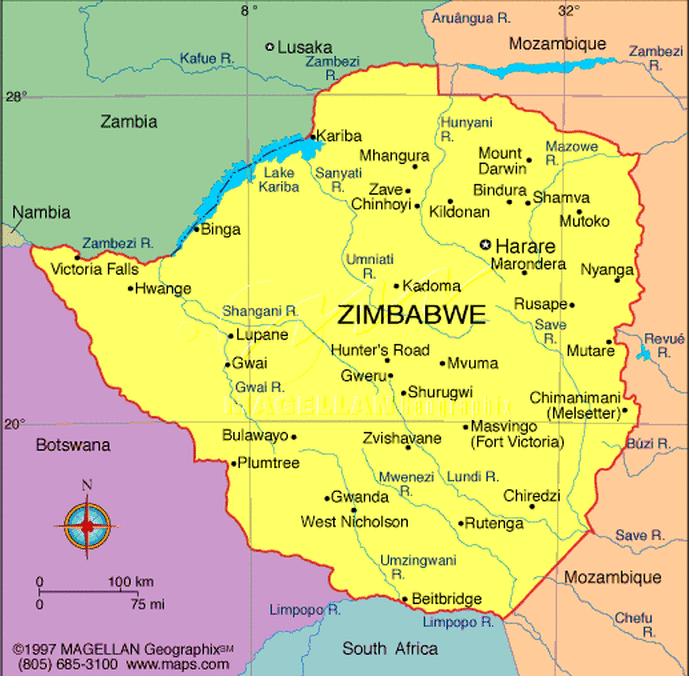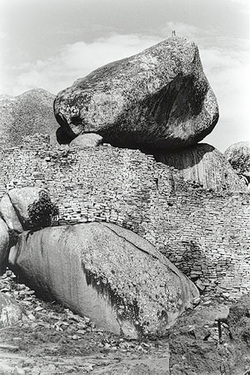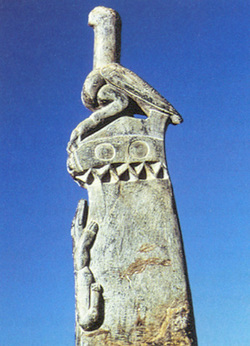Geography
Here's a lovely map of Africa. Yes the tiny dot is my civilization. Very impressive if I do say so myself. Great things come in small packages, so I wouldn't judge.

Great Zimbabwe is right on the umniati river (more specifically)
Religion
The great majority of the black population adheres to traditional religion based on reverence for ancestors. The Shona have preserved their ancient reputation for prophecy, divination, and rainmaking; they believe in Mwari, a supreme being. The stone ruins of Great Zimbabwe are regarded as a shrine of deep religious significance, as also are parts of the Matopo Hills.
Read More Here
The ruins of this complex of massive stone walls undulate across almost 1,800 acres of present-day southeastern Zimbabwe. Begun during the eleventh century.A.D.by Bantu-speaking ancestors of the Shona, Great Zimbabwe was constructed and expanded for more than 300 years in a local style that eschewed rectilinearity for flowing curves. Neither the first nor the last of some 300 similar complexes located on the Zimbabwean plateau, Great Zimbabwe is set apart by the terrific scale of its structure. Its most formidable edifice, commonly referred to as the Great Enclosure, has walls as high as 36 feet extending approximately 820 feet, making it the largest ancient structure south of the Sahara Desert.
Great Zimbabwe's most famous work of art are the eight birds carved of soapstone that were found in its ruins.The birds surmount columns more than a yard tall and are themselves on average sixteen inches tall.
Social Developments
Great Zimbabwe was a major source of gold. Its royal court lived in luxury, wore Indian cotton, surrounded themselves with copper and gold ornaments, and ate on plates from as far away as Persia and China.
Politics
This was hard for me to find much information that was reliable. If anyone has a question, let me know and I can do some more research.
Economics
At its peak in the 13th and 14th century, Great Zimbabwe thrived on cattle herding, gold mining and commerce with the Swahili port city of Sofala on the Indian Ocean. It produced cotton and pottery. Because of its strategic location near these resources and trade opportunities, Great Zimbabwe grew larger than any surrounding town and became the capital city of the Karanga (Shona) nation.
Archaeological evidence suggests that Great Zimbabwe became a centre for trading, with artifacts suggesting that the city formed part of a trade network linked to Kilwa and extending as far as China. This international trade was mainly in gold and ivory; some estimates indicate that more than 20 million ounces of gold were extracted from the ground. That international commerce was in addition to the local agricultural trade, in which cattle were especially important.The large cattle herd that supplied the city moved seasonally and was managed by the court. Chinese pottery shards, coins from Arabia, glass beads and other non-local items have been excavated at Zimbabwe. Despite these strong international trade links, there is no evidence to suggest exchange of architectural concepts between Great Zimbabwe and centres such as Kilwa.
Demographics
Little is known about the Bantu-speaking people who built Great Zimbabwe or how their society was organized. The ruling elite appears to have controlled wealth through the management of cattle, which were the staple diet at Great Zimbabwe. At its height, Great Zimbabwe is estimated to have had a population greater than 10,000, although the majority lived at some distance from the large stone buildings. Only 200 to 300 members of the elite classes are thought to have lived within Great Zimbabwe's massive edifices.
Timeline yay!!! Hope this helps

Intellectual Developments
I struggled to find much on this topic, if there's any specific questions, I can try to do more research
Technology
Great Zimbabwe rose on the Zimbabwe Plateau. Zimbabwe means stone building. Great Zimbabwe was the first city in Southern Africa and was the center of an empire, consolidating lesser Shona polities. Stone building was inherited from Mapungubwe. These building techniques were enhanced and came into maturity at Great Zimbabwe, represented by the wall of the Great Enclosure. The dry-stack stone masonry technology was also used to build smaller compounds in the area. Great Zimbabwe flourished by trading with Swahili Kilwa and Sofala. The rise of Great Zimbabwe parallels the rise of Kilwa





No comments:
Post a Comment